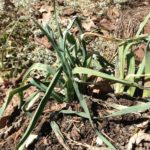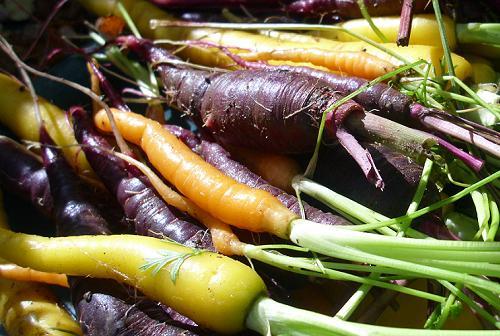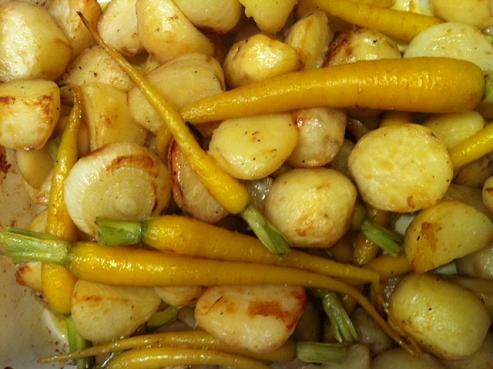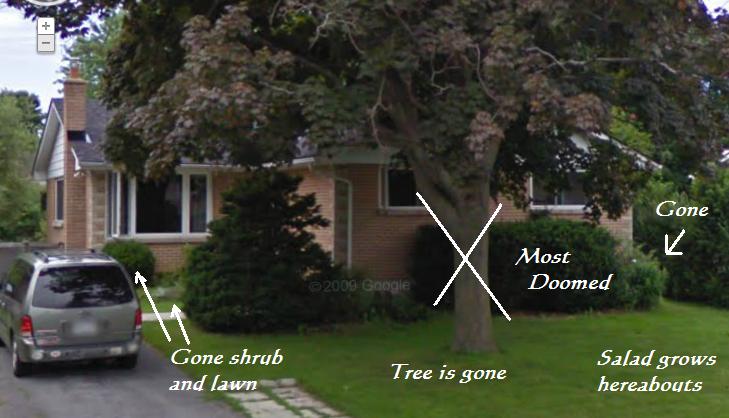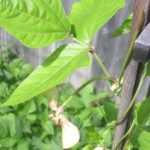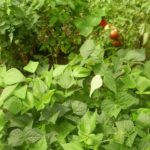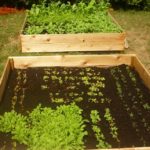So, this was dessert. We made a stack of pizzas tonight. This was the last one. I even have the blister on the back of my wrist where I brushed the hot oven wall to prove it. But apple pizza? Thirty years ago in the north end of Halifax, Nova Scotia there was Pizzeria Tomaso with Mr. Tomaso still holding sway before he sold the business to a local family who promised to keep up his standards, brought from Sicily. It was only open Thursdays and Fridays from 4 to 7 pm. He was about 80 and had 15 high school kids working behind him. I remember going in once and among the stacks and stacks of pizzas seeing, among those destined for law firms head offices and nearby neighbourhood families, boxes marked “the Cabinet” meaning the five or six extra larges were destined for the cabinet room of the government of the province. I remember asking for anchovies on my ‘za and he came past the clerk taking the order to slap my face saying “You want anchovies? You a good boy.” He used to cook pizzas 90% of the way and offer then tax free as “cook at home” pizzas because he was really mad that there was tax on pizzas. The CBC Halifax evening TV news was presented live from his pizzeria counter once a year when Frank Cameron and Doug Saunders hosted the show in the ’70s and early 80’s. He used to give away wine when you were waiting for your order because he was so mad that he was not allowed to sell it. And they still make an apple pizza.
Category: Food
Not Beer: Zero de Gris 2009, Huff Estates, PEC
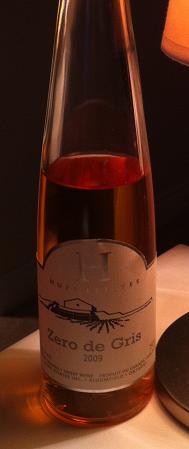 I was going to post about tea. I have been drinking a lot of tea lately. Good tea. Good tea is one of the least expensive good things going. Even at $35, per portion so might be a sweet wine like this bottle I picked up last summer at the winery on one of our ice cream, beach and cheese curd jaunts into Prince Edward County. A half bottle like this can easily be shared at dessert or after with six or eight. And you might open one once every couple of months, right? So, OK, not quite great tea value but often a well placed addition to the end of a holiday meal like the one shared today.
I was going to post about tea. I have been drinking a lot of tea lately. Good tea. Good tea is one of the least expensive good things going. Even at $35, per portion so might be a sweet wine like this bottle I picked up last summer at the winery on one of our ice cream, beach and cheese curd jaunts into Prince Edward County. A half bottle like this can easily be shared at dessert or after with six or eight. And you might open one once every couple of months, right? So, OK, not quite great tea value but often a well placed addition to the end of a holiday meal like the one shared today.
Zero de Gris is made with all Frontenac Gris picked late but short of forming noble rot or freezing. As flavour packed as I would have hoped, there’s honey and apricots on the nose. You can smell it with the glass sitting there on the side table. There’s more in there as well. Fresh lemon, white grapefruit, honey and something thicker, earthy – maybe melon or beeswax? A small sip gives you tangerine, lemon juice, honey in a sharp acidity framing a sweet hefty mouth feel. The finish is light and grapefruit clean with a lasting nod to that beeswax note.
We had this with a lemon curd cream cake. It would likely go well with just spoonfuls of thick cream and a couple dozen butter cookies if that were your thing, too. Light at 9.5% and enough sugar that the bottle’s drip leaves the neck sticky. Probably infanticide at three and a half years old. An award winner for Canadian late harvest wines in 2011.
Garden 2013: It’s Still March But Planting’s Begun
It has begun. A sunny Saturday reaching up towards maybe 7F today. I took down the cold frame that sat out back all winter and found one lone red lettuce plant growing along with a fair number of carrots. Leeks survived, hilled, out back and out front. Parsnips are starting to poke up enough green to betray their hiding spots.
Soups of ginger and parsnip are a-comin’. Peas have already been planted twice and some of the onion seedlings in the basement might actually survive. Rhubarb is a red ball pushing up through the leaves. But, best of all, that is the plot of garlic planted last fall showing itself.
Not Beer: Pinot Noir 2009, Grange, Closson Road, PEC
I didn’t buy this when we visited The Grange of Prince Edward County last August but maybe I should have. Found a bottle on a low shelf at the local government store. I sorta realized I had not been paying attention to this grape. I’ve probably been in a Côtes du Rhône rut now that I think of it. You know what that’s like. So, I have been picking up bottles from a few regions where Pinot Noir is grown when I see a reasonable price. Like this one. The Grange appears to have six different vineyards totaling around 60 acres. Half the vineyards have Pinot Noir. The are located just south of the lake in the middle of Hillier township on this Victorian map, right by old Sam Trumpour’s place. Lord Goog has the location, too.
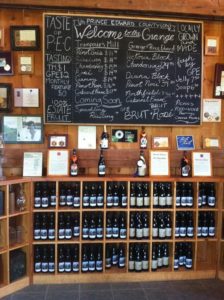 I made a white bean and sausage stew in the slow cooker to go a long with this wine for tonight’s family gathering. I threw in dried mushroom and celery root along with a good slug of a Niagara red blend. Earthy. Hopefully. Not sure if Pinot Noir earthy bears any relation to biere de garde earthy. Not sure I’ve thought about cross-referencing adjective from wine to beer at all, come to think of it. Whatever earthy means in relation to this bottle, it is defined by the Hillier Clay Loam that you can read all about at page 58 of this 1948 Government of Canada report on the soils of Prince Edward County. It’s all about the dirt.
I made a white bean and sausage stew in the slow cooker to go a long with this wine for tonight’s family gathering. I threw in dried mushroom and celery root along with a good slug of a Niagara red blend. Earthy. Hopefully. Not sure if Pinot Noir earthy bears any relation to biere de garde earthy. Not sure I’ve thought about cross-referencing adjective from wine to beer at all, come to think of it. Whatever earthy means in relation to this bottle, it is defined by the Hillier Clay Loam that you can read all about at page 58 of this 1948 Government of Canada report on the soils of Prince Edward County. It’s all about the dirt.
I took this advice and opened the bottle this morning. In the glass, the wine glows dark cherry red and gives off aromas like barky spices, alcohol, earthy berry… maybe red current? I agree with the idea of tastes of cherry and cranberry from this review but might add a little wintergreen and maybe strawberry as well. Some astringency from black tea tannins in the middle open to woodsy berry fruit at the end. Not the big and slap on the back wine like a lot of the Cabs, Merlot or Shiraz. A quieter drink.
Did I like it? Well, on the way come from dropping off the guest scurrying to get home before Earth Hour, I bought another. Stick it away for a bit to see what becomes of it. And, as we are not drinkers from fishbowls, half of this bottle is still around for leftovers tomorrow. And at well under $20 a good introduction to Prince Edward County Pinot Noirs.
Book Review: The World Atlas Of Beer, Tim ‘n’ Steve
 Not only do I like a good atlas, I believe deeply in the graphic presentation of data. Mapping, graphs, tables, photos and flow charts. These are the things that provide instruction, organize and contextualize. Text is so over valued, isn’t it? Anyway, suffice it to say that the WAo’B is lush, well organized and current as well as an excellent source of beer porn. The sort of book that proves its value. In fact, unlike all those other guys, I actually bought my copy at an extremely generous discount – one that does makes one wonder who in fact pays full retail any more – and I am very glad I did.
Not only do I like a good atlas, I believe deeply in the graphic presentation of data. Mapping, graphs, tables, photos and flow charts. These are the things that provide instruction, organize and contextualize. Text is so over valued, isn’t it? Anyway, suffice it to say that the WAo’B is lush, well organized and current as well as an excellent source of beer porn. The sort of book that proves its value. In fact, unlike all those other guys, I actually bought my copy at an extremely generous discount – one that does makes one wonder who in fact pays full retail any more – and I am very glad I did.
The book has received some pretty ripe cheese so far. ATJ needed a private moment. And, while it is virtually identical in page number and physical size to Jackson’s World Guide to Beer, the function of this book function is quite different. Don’t be fooled by the gullible. Thirty-five years ago the WG2B was a comprehensive gazetteer to the beers of the global beer scene. It dipped into beer culture on the one hand and, on the other, described and classified now uninteresting macro industrial lagers with impressive detail. Not only does it predate the idea of “craft” it does not concern itself particularly with “good” preferring instead to aim for “all” – which is fine… for its day. A whole page is devoted, for example, to an ad for Bud. Fabulous.
The WAo’2, by comparison, takes sides. Which is good. Better. Or at least better suited for today’s wealth of information. Sure, half a page of text is dedicated to what are called “convenience beers” but, really, they are popular beers that need acknowledgement but need not receive further comment. What we get instead is information about the best the world has to offer. And lots of information. After the obligatory introductory sections on the nature of beer that we seem to need in every beer book put out these days, we have 200 pages dedicated to regions and regions within regions of beer. Each gets its own map, summary of the current situation, topical photos as well as a selection of brief reviews of top brews one can find now.
Quibbles? I have heard there ought to be more text and that might be true. A book like this, however, could easily be expanded to twice or even ten times its size… if there were a market for that. But there isn’t because that is what the internet has provided for a couple of decades. The WAo’B, like other better beer books these days, are more about a comprehensive argument or an description of a method of approaching the subject. To date, anything more comprehensive has failed. For me, I would have been more adventurous with the mapping. A map showing the medieval spread of hops perhaps? Beery trade routes of the 1800s perhaps? You get a bit of this with, for example, the brewery density map of France on page 129 or, say, the map of Canada on page 207 that sets out, among many things, which areas have the strongest Belgian influence – though it is not clear to me why Vancouver is particularly weak in this respect. But that’s me, isn’t it. How many times I have gone on about the deficiency in pie charting in non-fiction these days?Buy this book. But just don’t pretend anyone is walking the steps of giants. And please don’t dwell on who is Monet and who is Reubens. Get out your coloured pencils and annotate the damn thing. Mark it up. Layer it with your own findings, prejudices and fantasies. It’s just a big book of maps, you know. Think of a text that a dream but imaginary compulsory grade 12 classes should be based upon. OK, maybe introductory undergrad. Or a field guide perhaps to the best beers of today. Sure. That’s it. So, get it and let it guide you out into those fields, wouldja?
Garden 2012: Root Vegetables For Thanksgiving Dinner
Three types of carrots. The smaller ones to be roasted with olive oil. The bigger ones will be shredded and mixed with parsley, garlic and rice wine vinegar in a salad. Add to that swiss chard with tarragon and orange zest as well as box choi with fish sauce and lime juice. Not to mention small onions roasting under the dripping beef. Lawn food is good.
Garden 2012: Making Meals From The Harvest
Yellow carrots. Small onions. Mine. Bought the seeds for the carrots in early March from Stokes. The variety is Yellowbunch and the seeds cost $2.25 a packet. Been eating them for likely 2 months now. Next year I am buying ten times as much. I believe I planted the carrots from May 5 until mid-July. Some are over a foot long now. Others are tiny like those above. The green bits taste like parsley when lightly roasted. Next year the spuds will be mine as well. I am building a tower, a crib, a box. Fill with soil. Ram spuds in through the sides. Potato high rise. A spuddy ziggurat.
Garden 2012: Onion Harvest Day Is Now… As In Now!
 Onions are no so much a vegetable as a necessity. At the old farmstead, I planted 2000 onion sets a year. This year, a quarter of that on about ten square feet of where the front lawn was removed last Easter.
Onions are no so much a vegetable as a necessity. At the old farmstead, I planted 2000 onion sets a year. This year, a quarter of that on about ten square feet of where the front lawn was removed last Easter.
They may last until Christmas. Unless I make a whopping pile of onion jam or something nutty like that. The smell of harvesting them with your bare hands is exotic. If onions, something we ate 1,000 years ago, were not common they would be a spice. Next year, more.
Garden 2012: Your Late August Update
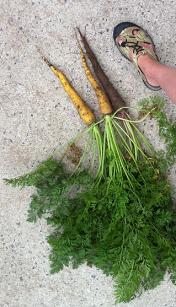 The garden – by which I mean the yard – has been inordinately productive while promising more and more.
The garden – by which I mean the yard – has been inordinately productive while promising more and more.
The green beans are on their third wave of crop. Salad green have been on every plate for weeks. Stoke’s Cherokee purple tomatoes are meaty things with tiny watery seed cell. And, as illustrated, the yellow and purple fleshed carrots that were planted where I lifted up front lawn on Easter weekend are now a foot and a half long. I dug deep. Layered in a deep seam of sheep poo. Going into a carrot cake this evening. And green beans can be made into pesto. Who knew? Ripped out another yew hedge and put in black currants. Sugar snap peas for autumn planted.
Foot long Chinese pole beans are in my diet now. Hidden under over reaching… or, really, crowded… collards there are defiant multi-coloured Swiss chard. I am already looking at seed catalogs dreaming of next year. And that shower stall in the basement might get turned into a salad grow-op for the off season. It already has a drain so why not? I could start 1,000 onion seeds in February in my own home. I could. As the thumbnail shows, Google maps hardly recognizes the place out front since the decision was to ditch the ornamental ugliness of the front lawn for tasty utility.
None
Garden 2012: Been Away And Back And What Survived?
The drought has had its effect. Something of a shut down by the onions. A refusal to go on. Squash and zucchini did not make it for a couple of reasons well studied already. But the leaves are booming. I have two sorts of mustard green as well as beet greens, red and green oak leaf lettuce as well as spinach. The salad bowl is full nightly. Beans boom. We are between flowerings so may well be looking at a late August harvest mirroring the mid-July one. A second planting of peas is taking off, too. Basil is booming. It will be pesto week. Collards have formed a blue green wall. All but two of the grave vines have excelled. Location is everything apparently. Having a yard full of berries now makes sense. There is nothing wrong with a yard full of berries. The rabbit has taken up residence. Were this 1870, he would make a swell stew along with the purple and yellow carrots. Starting to think about next year already. Five month to seed catalog ordering you know. Soil will need shifting, too. Much depends on soil quality.




